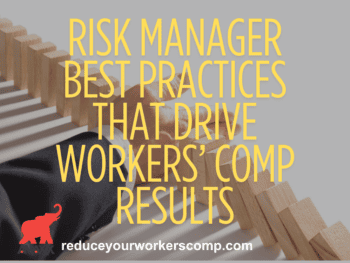
Forget the Golden Rule – Follow the Platinum Rule!
The “Golden Rule” taught us to “treating others as one’s self would wish to be treated.” This is a common denominator handed down in both secular and religious societies. The problem with this Rule when applied to workers’ compensation claims is it view things from the perspective of the claim handler. Now is the time for members of the claim management team to put themselves in the shoes of the injured employee, and follow the Platinum Rule – To treat others as you would want to be treated!
Click Link to Access Free PDF Download
By adopting this mindset, one will realize the following:
- Being a true professional in every sense of the word is essential;
- Treating all employees – regardless of ability with the respect and dignity they deserve is essential; and
- Engaging every claim with good faith, fair dealing, and placing ethics at the pinnacle of every decision is essential.
Protecting the Injured Employee Through Injury Prevention
Members of the claim management team can be proactive when it comes to preventing injuries in the workplace. This can include educating their insureds on best safety practices. Their obligations also extend to their post-injury response. Here are some important steps include in every workers’ compensation claim:
- Avoid unfair claims practices and bad faith denials;
- Complete a timely and thorough investigation of all injuries;
- Not exploited the financial vulnerabilities of policyholders;
- Not make unreasonable demands on the policyholder during the claim process; and
- Take all reasonable steps to preserve evidence.
Employers also play a role in this process. It must include promoting a culture of safety. Steps should include:
- Evaluate workplace ergonomics continually;
- Allow regular breaks for employee – especially those performing repetitive tasks;
- Ensure the proper use of machinery, tools, and safety equipment – never cut corners; and
- Lead by example!
Getting the Injured Employee Back to Work
Interested stakeholders need to take the lead on return-to-work issues and dispel the common myths that prevent employers from protecting their MVPs. Common misconceptions of injured employees include:
FREE DOWNLOAD: “5 Critical Metrics To Measure Workers’ Comp Success”
- Injured employees are lazy – they sit around all day and do nothing;
- Injured employees would rather stay at home;
- Injured employees will only get re-injured – we need to get a voluntary resignation on every workers’ compensation claim; and
- Injured workers receiving Social Security Disability are not allowed to return-to-work.
FACT: A vast majority of injured employees would rather get back to work. Getting them back to work can reduce program costs.
The challenge of effective return-to-work requires all interested stakeholders to move past the physical, educational, medical, and emotional barriers inherent in the workers; compensation system. Important steps to consider include:
- Communication with the injured worker. This can include having a dedicated liaison for any employee off work. Employers can buy goodwill by returning phone calls from an employee not able to work due to restriction. They should also be proactive in initiating contact with an employee.
- Communication with treating doctor. A return-to-work liaison can also serve as a point of contact with the employee’s treating physician. This can also include making certain communications between the physician and workers’ compensation insurer is taking place.
- Providing legitimate written job offers. The requirements of job offers vary in each jurisdiction. It is important specific elements are satisfied. There are other legal requirements where consultation with an attorney may help facilitate this objective.
Interested stakeholders should also consider learning more about, and implementing a “Work on Loan” program, or hiring an injured employee through the Social Security Administration’s “Ticket to Work” program.
Conclusions
Employees are of paramount importance to every workers’ compensation program. Treat them respect and dignity. To run an effective and efficient program, interested stakeholders need to understand their claims, assess and evaluate risks, and look for opportunities to engage all parties in the process.

Contact: mstack@reduceyourworkerscomp.com.
Workers’ Comp Roundup Blog: https://blog.reduceyourworkerscomp.com/
©2019 Amaxx LLC. All rights reserved under International Copyright Law.
Do not use this information without independent verification. All state laws vary. You should consult with your insurance broker, attorney, or qualified professional.
FREE DOWNLOAD: “5 Critical Metrics To Measure Workers’ Comp Success”
















